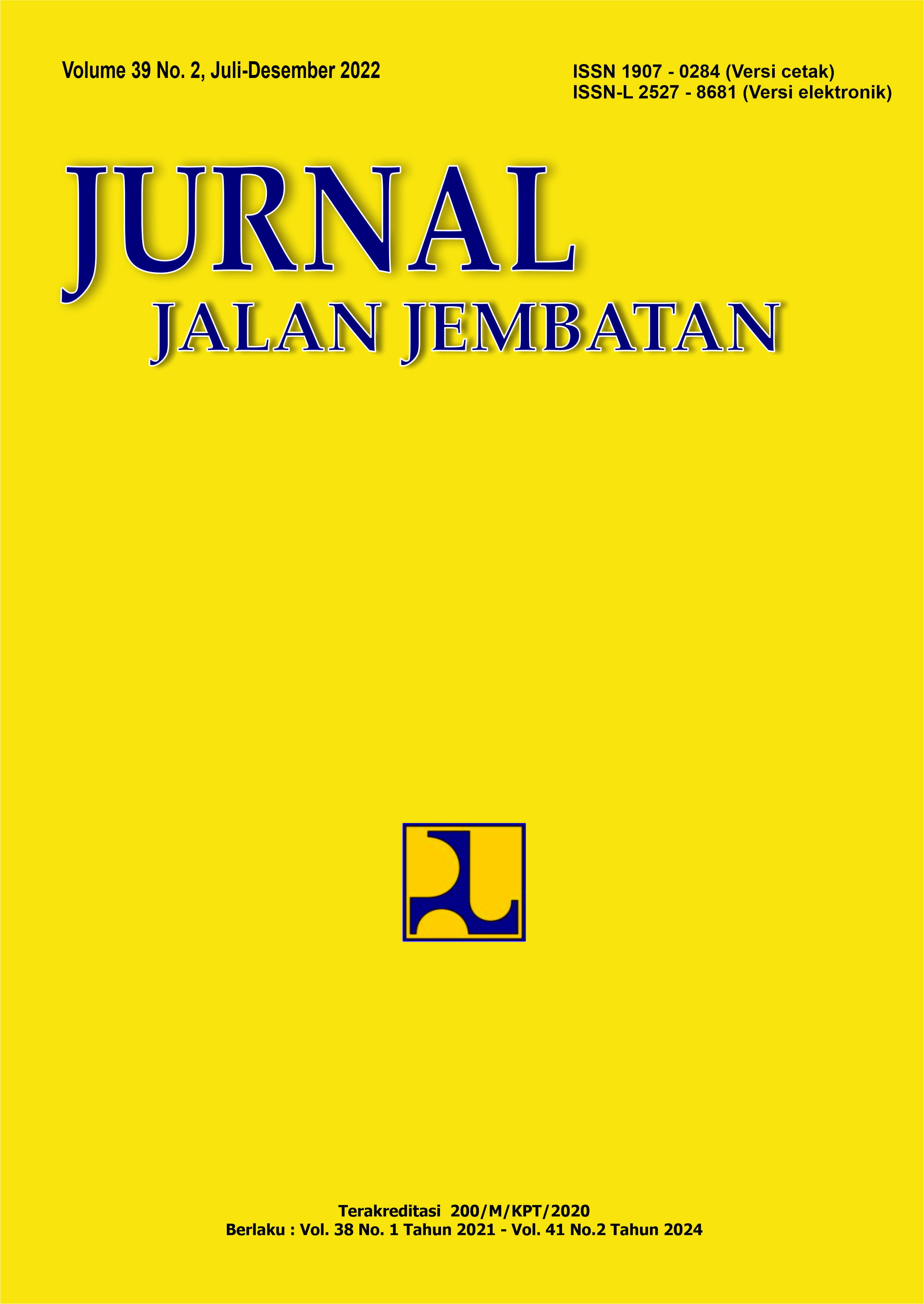EFFECTS OF LONG-SPAN BRIDGE CROSS-SECTION SHAPE ON CRITICAL FLUTTER SPEED ANALYSIS
Main Article Content
Abstract
Flutter is one of the most notable aeroelastic phenomenons in long-span bridges and needs to be evaluated carefully in the design phase as it might cause catastrophic structural failure. Numerical and experimental methods can investigate flutter on a deck bridge. However, the numerical methods could be less accurate for a complex-shaped deck, such as a deck equipped with railings and bluff cross-section bridges. Therefore, experimental methods using wind tunnels are more convenient for validating the flutter phenomenon on a bridge deck. The study was conducted to understand the effects of long-span bridge cross-section shape on the critical flutter speed analysis. The method is a hybrid numerical procedure, combining a wind tunnel test to identify the flutter derivatives coefficients and a numerical method to determine the critical flutter speed limit. The testing method developed in this research was used for both torsional and coupled–flutter cases. In the case of Testing Model I (thin plate), the developed method predicted the critical flutter speed of 16.7 m/s, which is close to the theoretical calculation using the thin-plate approach of 18.04 m/s. While in the case of testing model II (bluff body), the predicted flutter speed is 14.8 m/s which is close to the experiment result of 15 m/s. In the study case of the First Tacoma Bridge, the developed method could accurately predict the critical flutter speed with an error of only 4.3%. Hence, according to the study, the developed analysis method can accurately predict the flutter speed for both torsional and coupled flutter.
Keywords: bridge, aeroelastic, flutter, wind tunnel, numerical.
Article Details
Authors who publish in this journal agree to the following terms:
-
Authors retain copyright and grant the journal the right of first publication with the work simultaneously licensed under a Creative Commons Attribution License, which allows others to share the work with acknowledgment of the work's authorship and initial publication in this journal.
-
Authors may enter into additional contractual arrangements for the non-exclusive distribution of the journal's published version of the work (e.g., post it to an institutional repository or publish it in a book), with acknowledgment of its initial publication in this journal.
-
Authors are permitted and encouraged to post their work online (e.g., in institutional repositories or on their website) as it can lead to productive exchanges, as well as earlier and greater citation of the published work.
Each submitted manuscript must be accompanied by a "Manuscript Originality Statement" and a "Copyright Transfer Statement".

